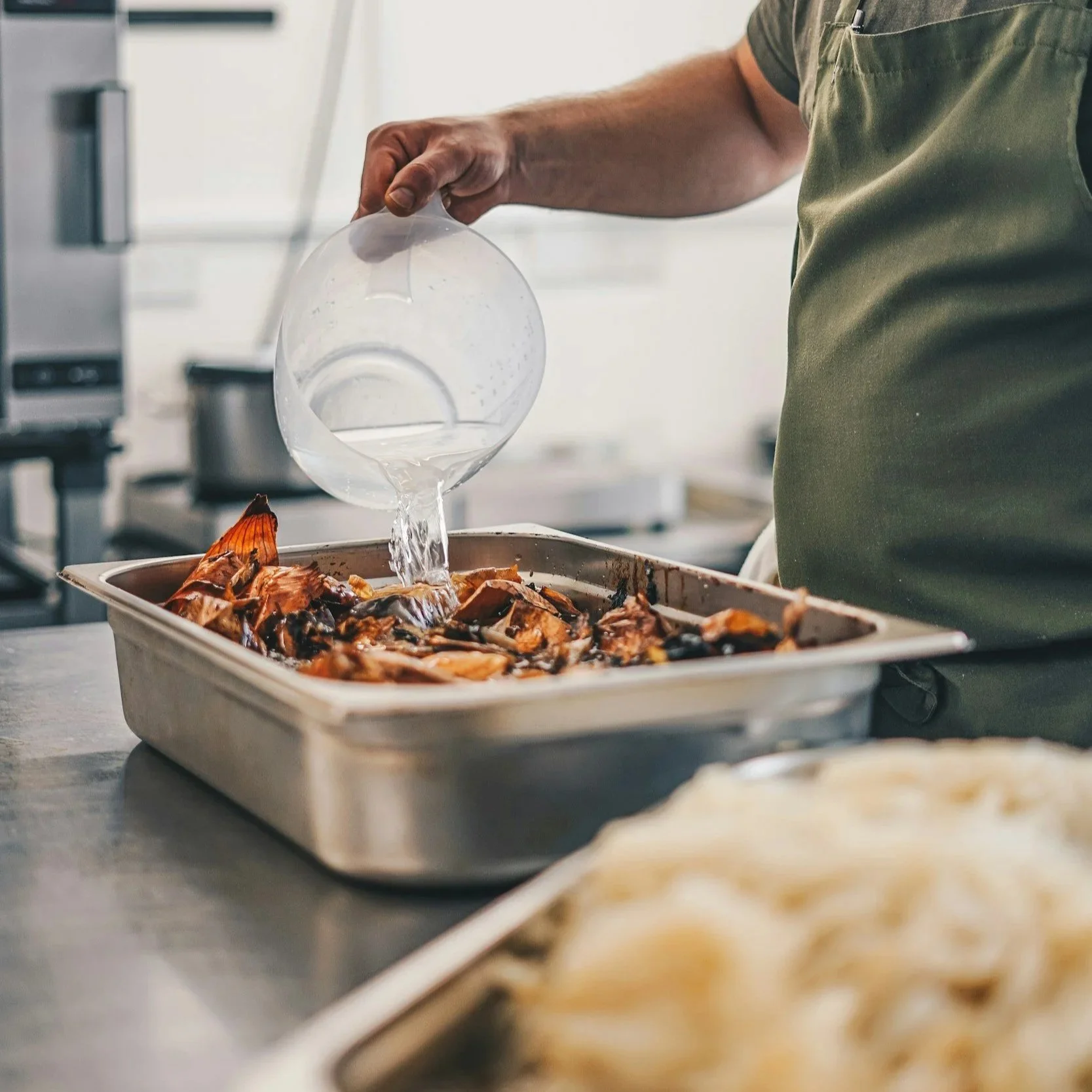So Much Potential, So Little on the Plate: Why It’s Time to Rethink What’s Already in Your Kitchen
Discover how The Greenprint helps restaurants expand plant-based menu options, reduce waste, and attract new guests, using ingredients already in-house.
When plant-based options are thoughtfully designed, they don’t compete with your classics, they complement them.
A beloved local Central Florida staple with one of the largest menus in town offers more than 200 unique ingredients, fresh produce, herbs, grains, and sauces that could easily build a dozen plant-forward entrées. Yet despite that abundance, there’s only one vegetarian dish and not a single vegan option that doesn’t require substitutions on their current menu.
This isn’t about calling anyone out, it’s about calling attention to a pattern. Across the country, many well-established restaurants are sitting on a goldmine of plant-based potential without realizing it.
The Case for Using What You Already Have
Adding new menu items doesn’t have to mean adding new inventory. Many kitchens already stock the building blocks of plant-based cooking, quinoa, avocado, seasonal vegetables, fresh herbs, olive oil, lemon, and more.
Getting creative with what’s already in-house helps:
Streamline weekly ordering and reduce waste
Boost menu flexibility without increasing cost
Give back-of-house teams a creative edge
A simple reframing, seeing your existing pantry through a different lens can unlock entirely new categories of dishes.
The Business Side of Plant-Based
Plant-forward dining isn’t a passing trend. It’s a long-term shift in how people eat, especially in cities where diverse diets and preferences are the norm.
Expanding plant-based offerings:
Opens the door to a larger audience, from flexitarians to families
Saves time and money by reducing “special tickets” and modification requests
Improves the guest experience for everyone at the table
Creates fresh marketing opportunities for advertising, social media, and PR features
When plant-based options are thoughtfully designed, they don’t compete with your classics, they complement them.
Where to Start: Three Easy Wins
Here are a few simple, scalable entrée concepts that could work in nearly any kitchen using ingredients you probably already have:
Grilled Portobello “Steak” with Lemon Spinach Risotto
Uses mushrooms, spinach, lemon, and risotto base already on hand. Elegant plating; minimal prep.
Mediterranean Farro Bowl with Roasted Vegetables & Lemon Herb Dressing
Uses roasted zucchini, peppers, broccolini, artichoke hearts, heirloom tomatoes, and farro (or substitute quinoa). Tossed in a bright lemon-herb vinaigrette and topped with a sprinkle of feta or toasted almonds. Vibrant, balanced, and easily made vegan by omitting cheese.
Crispy Chickpea Cutlets with Tomato-Basil Coulis
Uses chickpeas, herbs, garlic, breadcrumbs, tomato-basil sauce, and spinach or lemon risotto as a base. Protein-rich, vegan-friendly, and visually impressive, a chef-inspired option built entirely from existing in-house ingredients.
Closing Thoughts
Restaurants don’t need a new supplier list or marketing overhaul to modernize their menus, just a shift in perspective. With the right creativity and intention, a local favorite can serve tradition and innovation on the same plate.
The Greenprint is a collaborative menu consulting initiative designed to help restaurants identify and expand their plant-based potential. By auditing existing menus, inventory, and workflow, The Greenprint helps kitchens create dishes that align with their brand while meeting modern diner expectations. It’s not about replacing what works, it’s about revealing new opportunities hidden in what you already have. Because a more inclusive, creative, and sustainable menu doesn’t just attract new guests, helping your business grow from the inside out.
P.S. Start your Greenprint HERE!
Sarah, aka: The Plant Based Ginger, has been in the plant-based community for 20+ years and has worked in natural skincare as well as the health and wellness sector. Over the years her love of holistic wellness, essential oils, and plant-based cooking has merged to create the PBG website and social brand. She is a Certified Natural Health Practitioner, Homecook, and Coffee Lover.

